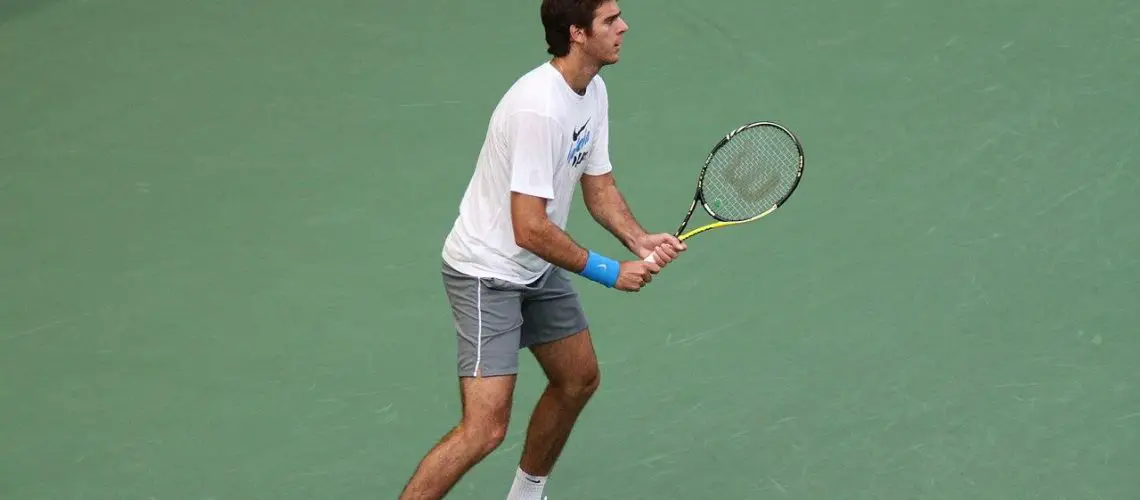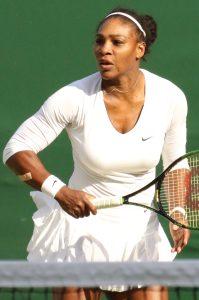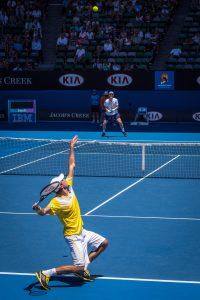We may earn money or products from the companies mentioned in this post.
Tennis Shoulder: Understanding the Aches and Pains

Whether you’re a seasoned tennis player or just starting out, it’s important to be aware of the risks associated with repetitive overhead motions One common ailment that plagues tennis players is known as tennis shoulder This condition refers to the pain and discomfort experienced in the shoulder joint as a result of overuse and strain So, what are the symptoms to look out for?
1 Definition and Symptoms
Tennis shoulder typically manifests as pain in the shoulder joint, often accompanied by inflammation and limited range of motion You may experience a dull ache or sharp pain during specific movements, such as serving or hitting overhead shots Additionally, you might notice swelling or tenderness around the affected area
2 Causes and Risk Factors
The repetitive nature of tennis strokes can put significant stress on your shoulder muscles and tendons, leading to micro-tears and inflammation over time This can be exacerbated by poor technique, improper warm-up routines, or using equipment that doesn’t suit your playing style
Furthermore, factors such as age, previous injuries, muscle imbalances, and inadequate rest between matches can increase your risk of developing tennis shoulder
The Importance of Proper Rest and Recovery for Tennis Shoulder

If you’ve been experiencing symptoms of tennis shoulder or have received a diagnosis from a medical professional, it’s crucial to prioritize rest and recovery in your treatment plan
1 Preventing Further Damage or Injury
Giving your shoulder ample time to rest is essential for preventing further damage or worsening of your condition Continuing to play through the pain can lead to more severe injuries that may require longer periods of rehabilitation
By taking breaks from intense tennis activities and modifying your training routine, you can reduce the strain on your shoulder and allow it to heal
2 Promoting Healing and Recovery
Rest is not just about avoiding activity; it’s also about giving your body the time it needs to heal During periods of rest, your shoulder muscles and tendons can repair themselves, reducing inflammation and promoting recovery
In addition to rest, incorporating gentle stretching exercises, applying ice or heat therapy as advised by a healthcare professional, and engaging in physical therapy can aid in the healing process
Remember, every individual is different, so it’s important to consult with a healthcare professional for an accurate diagnosis and personalized treatment plan for your tennis shoulder By prioritizing proper rest and recovery, you can get back on the court with a healthy shoulder and continue enjoying the sport you love!
Factors influencing the duration of rest for tennis shoulder

Tennis shoulder injury can vary in severity, which plays a significant role in determining the duration of rest required for recovery Understanding the different levels of injury is crucial in managing treatment and allowing the shoulder to heal properly
Mild cases: minor strains and inflammation
In milder cases, such as minor strains or inflammation, rest may be required for a shorter period These types of injuries can often be resolved with proper rest, ice application, and anti-inflammatory medications With diligent care and rehabilitation exercises, individuals experiencing mild cases can expect a relatively swift recovery
Moderate cases: partial tendon tears or more severe inflammation
For moderate cases involving partial tendon tears or more severe inflammation, a longer period of rest may be necessary This allows the injured tissues to heal without further strain or damage In addition to rest and medication, physical therapy may also be recommended to aid in recovery
Severe cases: complete tendon tears or chronic issues
Severe cases of tennis shoulder, such as complete tendon tears or chronic issues, typically require an extended period of rest These injuries involve more extensive damage that necessitates thorough healing before returning to activity In some instances, surgical intervention might be required to repair the torn tendons or address chronic conditions
Individual factors affecting recovery time
Beyond the severity of the injury itself, individual factors can influence how long it takes for a tennis shoulder to heal completely
Age and overall health condition
Youthful individuals generally experience faster recoveries compared to older ones due to their stronger regenerative capabilities However, pre-existing health conditions can impede healing processes regardless of age
Previous history of similar injuries
If an individual has previously experienced tennis shoulder or similar injuries, the recovery period may be extended Recurrent injuries can cause complications and delays in healing To minimize the risk of re-injury, proper rest and rehabilitation are essential
In conclusion, the duration of rest required for tennis shoulder recovery depends on various factors The severity of the injury itself, as well as individual factors like age, overall health condition, and previous injury history all play a role in determining how long it takes for someone to fully recover from a tennis shoulder injury
Rest Strategies for Tennis Shoulder Recovery

Initial Stage: Acute Phase (First Few Days)
In the initial stage of tennis shoulder recovery, it is crucial to take the right steps to promote healing and reduce discomfort Here are some rest strategies to follow:
-
Proper Positioning:
Keeping the affected arm elevated can help minimize swelling Additionally, it’s important to avoid lying on the injured side while sleeping to prevent further strain -
Ice Application:
Applying ice packs for 15-20 minutes several times a day can provide relief by reducing inflammation If available, using ice compression wraps can enhance this cooling effect -
Pain Management:
Over-the-counter pain relievers like ibuprofen or acetaminophen can help alleviate discomfort However, if the pain persists or worsens, it is advisable to consult a healthcare professional for further guidance
Second Stage: Subacute Phase (Approximately One Week)
In the second stage of tennis shoulder recovery, you can gradually introduce exercises that promote mobility and strength Here are some recommended strategies:
-
Gentle Range-of-Motion Exercises:
Pendulum swings, wall slides, or assisted arm lifts are excellent choices during this phase Start with low intensity movements and gradually increase as your pain tolerance allows -
Progressive Strengthening Exercises:
Incorporate light resistance bands or weights into your routine to strengthen the muscles around your shoulder joint Focus on slow and controlled movements to avoid straining the recovering area -
Pain Management Strategies:
Throughout this subacute phase, it’s important to continue managing any pain or discomfort Use the pain relief methods mentioned earlier and adjust them based on your needs
By following these rest strategies during the different phases of tennis shoulder recovery, you can aid in the healing process and gradually regain strength and mobility in your shoulder Remember to listen to your body and consult a healthcare professional if you have any concerns or persistent pain
When to Return to Tennis and Other Activities

Returning to tennis and other activities after an injury is an exciting prospect, but it’s important to listen to your body and take the necessary steps for a safe comeback Here are some key considerations:
Signs of Recovery
One of the indicators that you’re ready to resume playing tennis is a reduction in pain and an improved range of motion in the affected area Additionally, regaining strength in your arm is crucial for preventing further injury
Consultation with Healthcare Professionals
Prioritize working with healthcare professionals such as physical therapists or sports medicine specialists during your recovery journey They can provide expert guidance on rehabilitation exercises and help determine when it’s appropriate for you to return to play Always seek approval from your doctor before resuming any physical activity
Gradual Return to Activity
A gradual approach is essential when reintroducing yourself to tennis and other high-impact activities Start with low-impact exercises like swimming or cycling, which allow you to build endurance without putting excessive strain on your injured arm or shoulder As you regain strength and confidence, slowly incorporate tennis-specific drills and practice sessions into your routine
Prevention of Future Injuries
To minimize the risk of future injuries, focus on strengthening the rotator cuff muscles through regular exercise routines that target this area specifically Proper warm-up exercises before playing tennis can also help prepare your body for the demands of the sport Lastly, always maintain proper technique during gameplay, as poor form can lead to unnecessary strain on your joints and muscles
Remember, each person’s recovery timeline may vary depending on the severity of their injury and individual factors Be patient with yourself throughout the process, prioritize safety, and consult with healthcare professionals to ensure a successful return to tennis and other activities
Useful Links

“Dead Arm Syndrome” in Tennis Players
Shoulder injuries: A common complaint for tennis players
How to Treat Shoulder Injuries
Little League Shoulder
What to do about rotator cuff tendinitis
Rotator cuff tendinitis and tear (Beyond the Basics) – UpToDate
Rotator Cuff Injuries in Tennis Players – PMC
How Long Should You Wait to See a Doctor for Shoulder …
Shoulder Tendonitis: Treatments & Symptoms
Shoulder impingement
Shoulder pain Information | Mount Sinai – New York
Shoulder Impingement: Symptoms, Causes, Treatment …
Shoulder Injuries in the Throwing Athlete – OrthoInfo – AAOS
How To reduce Shoulder Pain & Prevent Shoulder Injuries In …
Tennis shoulder treatments – Darrow Stem Cell Institute
The Best Shoulder Pain Exercises for Tennis Players
IMPINGEMENT SYNDROME
How To Manage Shoulder Injuries in Tennis Players
How to Prevent Shoulder Injuries In Tennis






